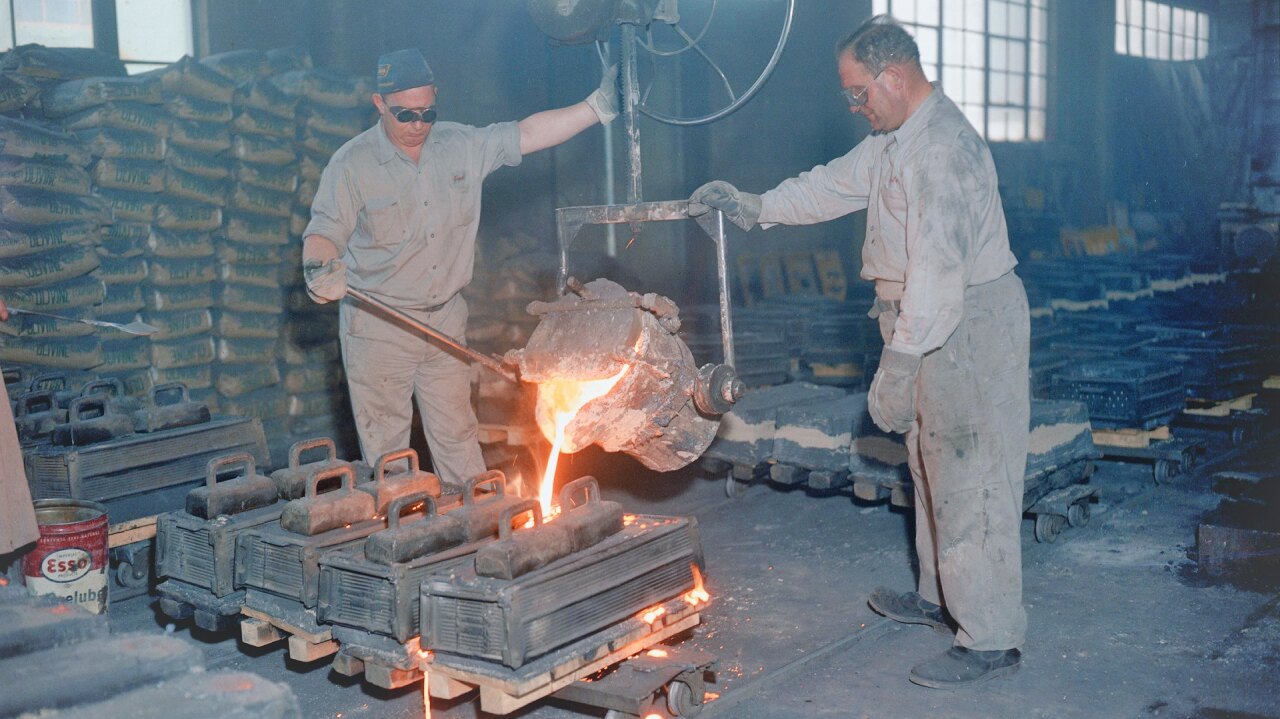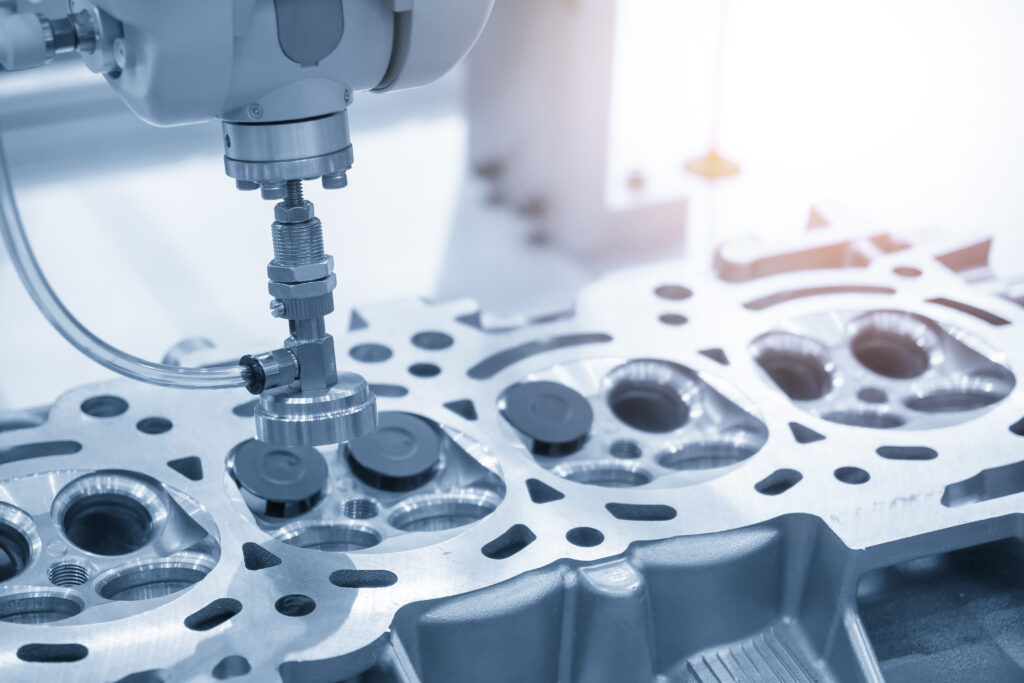
Robot casting involves using an industrial robot to automate steps in metal casting applications. It is a valuable process across manufacturing industries, including automotive, aerospace, and heavy machinery.
Of course, “casting” is not just one process. Each type of task has its own technical challenges when adding a robot. With industrial robots able to handle molten metal, machining molds, and more, there are now more options than ever for automating casting with a robot.
In this article, we explore how robotic automation is applied to casting and how you can get the most from robot casting.
What Is Casting in Manufacturing?
Casting is a manufacturing process where molten material, usually metal, is poured into a mold to form a specific shape. Once the material cools and solidifies, the mold is removed, leaving behind a part ready for machining or assembly.
Compared to other manufacturing processes, casting is ideal for:
- Creating complex geometries.
- Making large volumes of identical parts.
- Achieving consistent material properties, like strength and toughness.
- Producing parts more cheaply than with machining.
Because casting involves high temperatures, repetitive motions, and potential safety risks, it is a prime candidate for robotic automation.
The Rise of Robot Casting: An Overview
Robot casting has been increasing in popularity for some years. With robots able to improve speed and safety, the technology can improve a range of tasks from simple material handling to pouring molten metal.
According to industry statistics, a key driver to this adoption is the high payload of industrial robots. This helps to cut cycle times and improve the safety of human workers working with high temperature liquids in harsh environments filled with airborne particles.
Robots also help in achieving more consistent part quality and reduce material waste. This contributes to more sustainable casting processes that are allowing manufacturers to stay competitive.

Common Casting Processes Where Robots Are Used
Robots can apply to a huge number of tasks within a manufacturing environment. Because of this, it’s usually not a question of whether you can automate a task, but which task makes most sense to automate first.
Here are 3 examples of common casting processes where robots are already being used:
Die Casting
As one of the most widespread methods of casting, die casting uses high pressure tools to inject molten metal into reusable molds.
Some steps that robots can help include:
- Material Handling — A robot can load raw inserts into the casting dies and unload the cast parts.
- Mold Spraying — Robots are ideal for applying release agents to casting dies to prevent sticking.
- Finishing — Flash removal, deburring, and surface finishing are very common robotic processes after casting.
Investment Casting
Also known as lost-wax casting, investment casting involves creating a wax model of the desired part to create a ceramic casting mold. After casting, the ceramic mold is destroyed to remove the part.
Some steps that robots can help include:
- Pattern Dipping — Robots are ideal for automating the repetitive task of coating wax molds in the ceramic slurries.
- Shell Handling — With the right end effectors, robots can transport the fragile ceramic shells safely to reduce breakages.
- Finishing — Robots are ideal for surface finishing tasks of the cast parts.
Sand Casting
Sand casting is often reserved for large manufactured parts that require less precision, such as engine blocks for
Some steps that robots can help include:
- Pouring Metal — Some robots can now pour metal into the sand casting molds, reducing the safety risks for human workers.
- Sand Core Removal — Robots can also precisely remove sand cores from their core boxes.
- Part Extraction — Safely removing cast components after cooling is a perfect task for robots in casting.

5 Key Benefits of Robotic Automation in Casting
Casting environments are hazardous, presenting significant safety and consistency challenges for many manufacturers.
Here are 5 key benefits for using robots to automate casting:
- Improved Safety — With their ability to operate in dangerous conditions, robots can safeguard human workers from the environmental risks of casting, including extreme heat, molten metal exposure, and toxic fumes.
- Increased Throughput — Operating with minimal downtime, robots contribute to increases in productivity by creating a steady production flow.
- Consistent Quality — Robots help reduce the product variability that is common with manual casting by reducing human error, breakages, and inconsistencies.
- Cost Efficiency — Even when the initial investment is high, robots often save substantial costs in long-term labor, material efficiency, and reduced reworking.
- Scalability — By using the right programming system, a robotic casting cell can be easily scaled to meet increased production requirements.
These are just a few of the many benefits you can achieve by adding robotic casting to your manufacturing process. With leading robot manufacturers like Yaskawa and FANUC now providing specific robots for casting applications, it has never been easier to automate casting with robots.

How to Easily Simulate and Program Robot Casting Tasks with RoboDK
How can you deploy your robot casting application as smoothly and easily as possible?
With the right programming software, even complex casting applications are simple to deploy.
RoboDK is ideal for robot casting, allowing you to validate your robot application before you put it into production. It allows you to build simulations to visualize your entire robot casting process from start to finish. This helps reduce errors in robot deployment, creates a more flexible programming workflow, and achieves a higher return on investment from the start.
Whether you are using die casting, investment casting, sand casting, or any other type of casting task, RoboDK can help you get the most from your industrial robot.
What type of casting process would you like to automate? Join the discussion on LinkedIn, Twitter, Facebook, Instagram, or in the RoboDK Forum.. Also, check out our extensive video collection and subscribe to the RoboDK YouTube Channel
The post Robot Casting: How Robots Are Transforming the Metal Casting Industry appeared first on RoboDK blog.